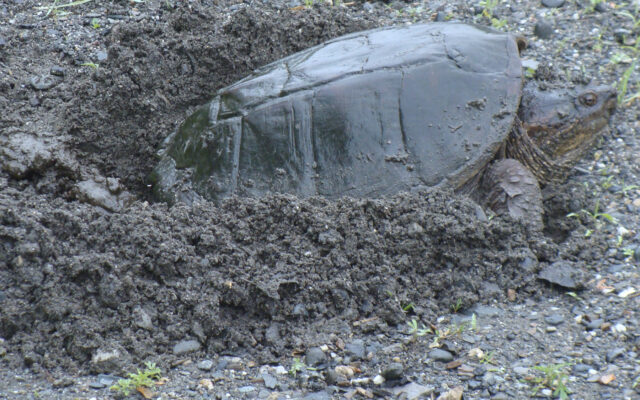
Don’t panic if a snapping turtle lays eggs on your land
By Elizabeth Walztoni
With snapping turtle egg-laying season underway, the creatures can be seen all over roadsides, in sandy clearings and, perhaps, on your land.
Some Maine homesteaders have found snapping turtle eggs laid in their yards and even chicken coops. The smooth open surfaces of garden beds, yards and greenhouses are appealing to the turtles.
Though the turtles may look fearsome, their eggs likely don’t pose a risk to you or your animals. You might even want to help them survive.
The snapping turtle mother only leaves her home to lay eggs. Then she’ll return to the pond, marsh or river from whence she came, leaving her young to fend for themselves. That means you won’t see her again.
Though they will defend themselves by snapping, the turtles don’t tend to seek out conflict.
As for her eggs, they’re delicate, and the embryos are likely to die if you move them. They are also a tasty meal for numerous other predators like foxes, raccoons and skunks.
When they hatch and return to the water, snapping turtles actually have important functions for the ecosystem. They eat almost anything and help to clean decomposing matter.
Because of this, some people build wire cages to protect the eggs until they hatch two to four months later.
If you have to move an adult turtle for some reason, approach it calmly and lift from the back of the shell. Stay clear from the head, because the turtle can stretch its neck back to bite. Don’t pick it up by the tail. That could detach its spine.
If you see one, you can record it for the Maine Amphibian and Reptile Atlas Project run by the Maine Department of Inland Fisheries and Wildlife.